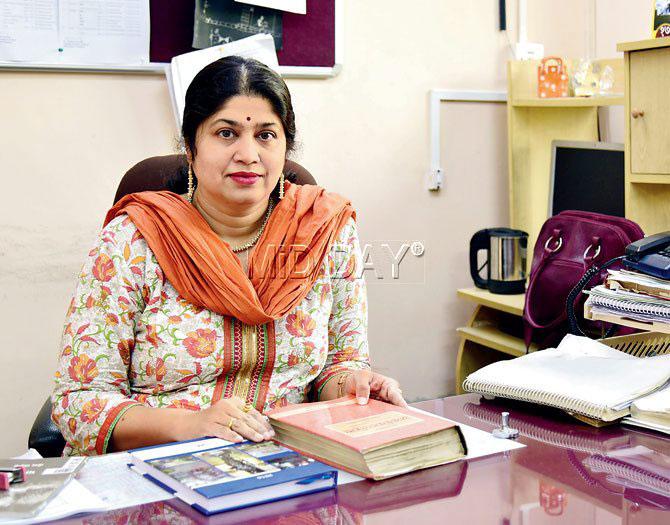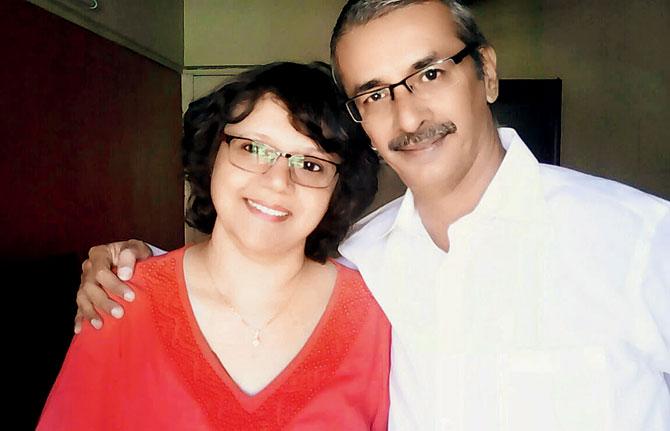There-s a whole sub-culture of Mumbaikars learning Sanskrit, and no, it has nothing to do with being on the right of centre

Arjun Vyas (fourth from left) says those who complete the course, often attend weekly sessions in order to practise their skills. Ujjwala Shetye (right) joined the classes in order to expand her learning skills. Initially, the classes were held on her bui
Chandrahas Halai is a man of many pursuits. He is a mechanical engineer, a mathematician, a travel writer and history buff. Tying these varied interests together now, is a language that history seems to be in no interest to forget.
ADVERTISEMENT
Last July, Halai signed up for a certificate course in Sanskrit that would eventually enable him to read the Samarangana Sutradhara. Written in Sanskrit by Raja Bhoja, the 11th century ruler of Malwa region, this text is a discourse on civil engineering detailing construction of buildings, forts, temples, idols of deities and mechanical devices. “I am interested in temple architecture. In our country, temples 210 feet-tall have been built in the pre-modern era. What was the sort of machinery that was used? How did the workers carry the stones to that height?” The answers to these questions, says Halai, lie in the 80 chapters of the book. And although translations exist, he fears much of the essence will be lost. Plus, he wants to avoid reading history from a Westerners’ perspective.
 Madhavi Narsalay, HOD at the department of Sanskrit at Mumbai University, consulted on the show, Mahabharat between 2013 and 2015 to help the makers access original texts instead of translations. Pic/Shadab Khan
Madhavi Narsalay, HOD at the department of Sanskrit at Mumbai University, consulted on the show, Mahabharat between 2013 and 2015 to help the makers access original texts instead of translations. Pic/Shadab Khan
An interest in mythology borne out of a need to better a television script and a better left brain-right brain balance are some of many reasons driving Mumbaikars to Sanskrit classes. And, as is the case with Halai, it’s not in order to read religious texts.
Madhavi Narsalay, assistant professor and head of department of Sanskrit at Mumbai University, says this year has seen 100 students enroll for the certificate course that run over weekends. It’s full capacity. The numbers, she adds, have been at a high since 2000.

Snehal Vyas
In between, the class average would be 50-60.
In 2013, she was asked to consult on the show by the the producers of Mahabharat, 267 episodes of which were aired. “They wanted someone to provide them the exact story by reading the original texts and not translations,” says Narsalay, who has been with the department for 20 years. She would also be required to identify shlokas from the original text that would fit in when a certain character was introduced.
“For instance, for the entry of Draupadi who rose from the fire… I had to go back and read a lot of original texts," she remembers.
Reading Sanskrit, however, isn’t everyone’s passion. Arjun Vyas, who greets you with a Namo Namah he will make it a point to tell you that the greeting has nothing to do with the country’s Prime Minister, says he stumbled upon the class on a social messaging group and felt obligated to join. A few classes in, however, the 51-year-old industrial project consultant was hooked. “All my life I though Sanskrit was a difficult language, but it’s so easy,” he exclaims. Vyas attended the free of charge, 10-day, spoken Sanskrit camp conducted by Sanskrit Bharati in Bandra East this February. He recommends the class because it’s all about conversational Sanskrit: “Upanetram kutra aasti?” where are my spectacles?”. Which brings us to the tough question. Once they do learn Sanskrit, where do Vyas and his batchmates practise?
It’s a bit of an admission. “We would call each other and speak. Else, there are weekly sessions where people can come and practise,” he adds. Plus, he says, he now converses with his wife Snehal in Sanskrit. Snehal, 51, a breast cancer survivor says someone first asked her to start reciting Sanskrit shlokas in 2013 since it would help her tongue stiff from chemotherapy, recover. But, watching her husband speak the language fluently prompted her to join the class. “Part of the motivation was envy. How could he speak better than me,” laughs the manager at NIIT. Now, the two have found a code language to speak in, she says.
The lure of Sanskrit, says Malhar Kulkarni, who teaches the language at IIT-Powai, is that it-s free in order. “For instance, you can’t change the order of the words ‘tiger eats man’ in the English language without changing its meaning. In Sanskrit, this is possible,” says Kulkarni, who holds weekly classes for advanced level students at Vile Parle, again free of charge.
Sanskrit, he says, also finds takers among software engineering students who want to use the language — considered to be the root of several Indo-European languages — to develop tools to analyse others languages and train machines to translate them.
Kulkarni emphasizes that the curiosity about the language crosses borders of religion and social strata. “It’s part of our psyche, everyone feels connected with it. Once I was walking in Vile Parle and came across two drunk men fighting outside an illicit bar. One, in a fit of anger, said to the other, ‘I will send you to the yama sadan!’ Not hell. But, yama sadan. That’s how much we’ve grown up with Sanskrit.”
 Subscribe today by clicking the link and stay updated with the latest news!" Click here!
Subscribe today by clicking the link and stay updated with the latest news!" Click here!








